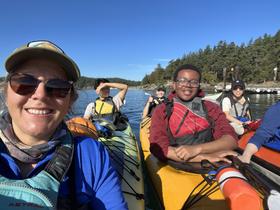Choosing a boarding or private day school is a process involving several steps. Fortunately for you and me, the web makes the first step much easier. Sites like Boarding School Review and Private School Review take the work out of finding schools. Use our Applications Calendar to keep you organized.
Step 1: Identify Schools
Let your imagination and wishes run wild at this stage. Look at any and every school that catches your fancy. Take time to explore each school's website. Many of them have excellent video tours. Read what the students have to say about their school. Both Boarding School Review and Private School Review have student comments. Many school websites have comments as well, although you probably will find that those comments are pretty positive. Boarding School Review and Private School Review do not filter student comments.
Bookmark school web addresses or swipe and paste the URLs into a spreadsheet. That makes the next step in the process easy. You should end up with a list of 15-20 schools, but don't worry if you have more than that.
And don't worry at this stage about which school is the best one for your child. More about how to deal with that question later.
Step 2: Narrow Your List
This is one of the more time-consuming parts of choosing a private school. Why? Because you need to sit down with your child and discuss each school on the list. That's why having your list on a spreadsheet is such a good idea. As you work through the list, you can code the schools which will end up on your shortlist. The shortlist should be between 3-5 schools.
So, how exactly do you whittle down your original list of 15-20 schools? By asking lots of questions.
- Do you want a single-sex or a coeducational school?
- Do you want to go to a small or a large school?
- Do you want to go to a religious school?
- Do you have special interests such as the arts or hockey?
- What about special needs?
- Do you want to go to a military school?
Answer these questions, and you will see at once how schools that were on your original list are no longer in the running.
The next question you have to consider is much tougher. "Are you a good match for what the school is looking for?" Please understand there's much more to that question than appears at first glance. After all, how do you know what the school is looking for anyway? You can read the website and explore the catalog in detail. But what are they looking for? That's the main reason why you need to hire an educational consultant. Your professional educational consultant can match what you offer against what she knows individual schools are looking for. What if you decide not to hire an educational consultant? Well, of course, you can go that route. But then, you will never know with any certainty what your child's chances are until the acceptance letters come out in March.
This brief video offers an overview of academics at Chaminade College Preparatory School.
Your educational consultant will help you develop a list of schools which will include one safe school and one school, which is a real reach. The other 2 or 3 in the middle will be schools where you stand a very good chance of being accepted.
Step 3: Visit Schools
You simply cannot skip this important step. Visiting schools on your shortlist takes time. However, the interview is tied to the campus visit. The interview is your chance to assess whether the school is a good fit for your child and your requirements. After all, the school will assume a vital role in shaping your young person's future in so many ways. You need to get this part right. The only way to do it is to visit the school and ask many questions. Find out what is being taught and how it is being taught. Find out more about the teachers and how qualified they are. Use our Checklist for Comparing Schools to keep track of all your data so that you can discuss it with your family and advisors after you have visited all the schools on your list.
This brief video gives us an overview of Saint Andrew's School, Boca Raton, Florida.
Step 4: Admissions Testing
Most schools use the SSAT and/or the ISEE, which are standardized admissions tests. There will also be an essay and a few other bits of writing, which you and your child will have to do. A word of advice about standardized tests: make sure your child has plenty of practice. Don't leave that practice to the last minute. Schedule at least two mock tests simulating the test conditions as closely as possible, i.e., without distractions and working to the clock.
Step 5: Apply and Pay for it
Most schools have online applications which simplify the process. Some schools use a common application form. Download these materials in September so that you can hand out the teacher recommendation forms and get those taken care of early in the fall.
Here is a look at The Linsley School, Wheeling, West Virginia.
If you cannot afford to pay all or any of the tuition and related school expenses, then be sure to file the financial aid request forms in good time. These are a detailed review of your finances, including tax returns and other supporting documentation. Most private schools offer generous financial aid packages. Some even offer a free education if your family meets certain means tests.
That's all there is to it. Our best advice? Start early. Stay organized.
Questions? Contact us on Facebook and Instagram. @boardingschoolreview
#BoardingSchoolGuide #SchoolSelection #CampusVisits #AdmissionsProcess #PrivateEducation #boardingschools












